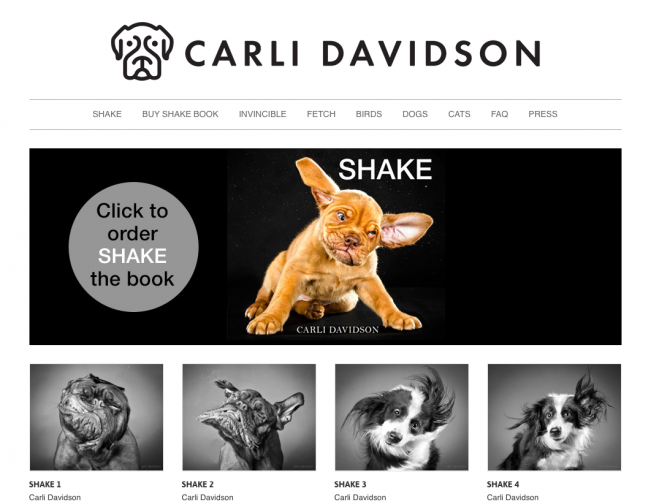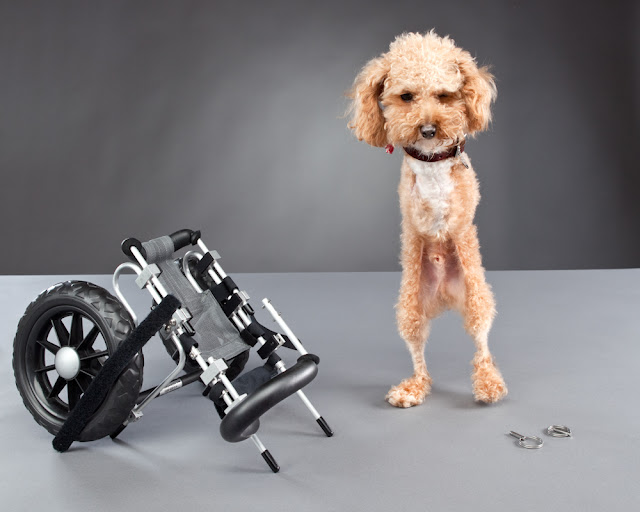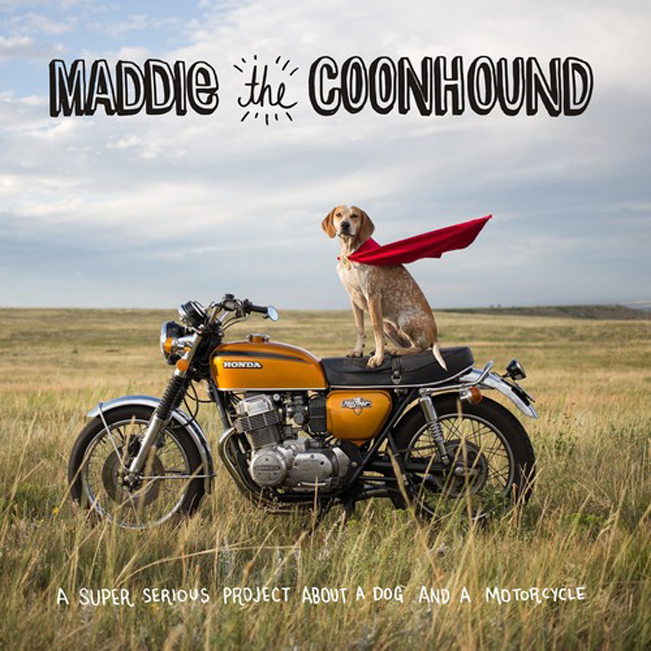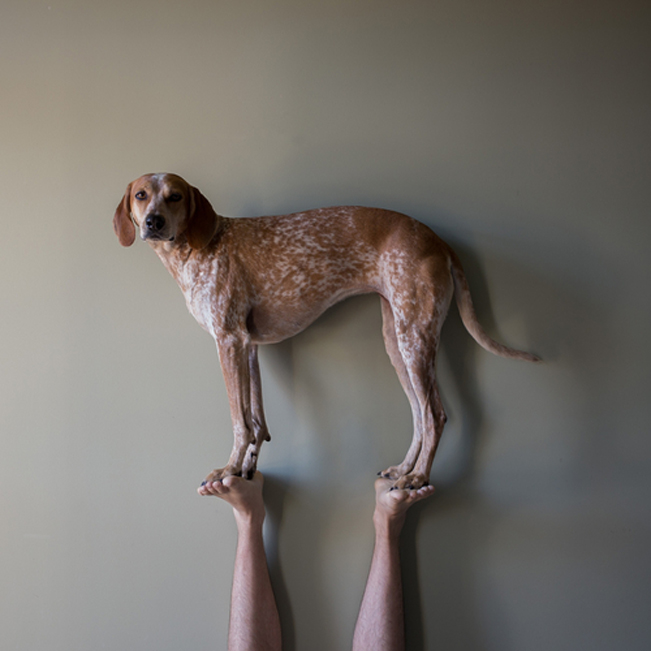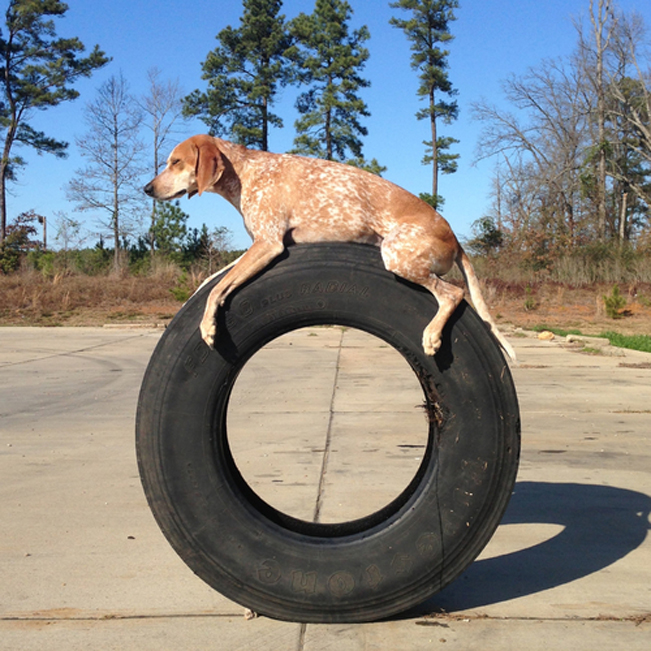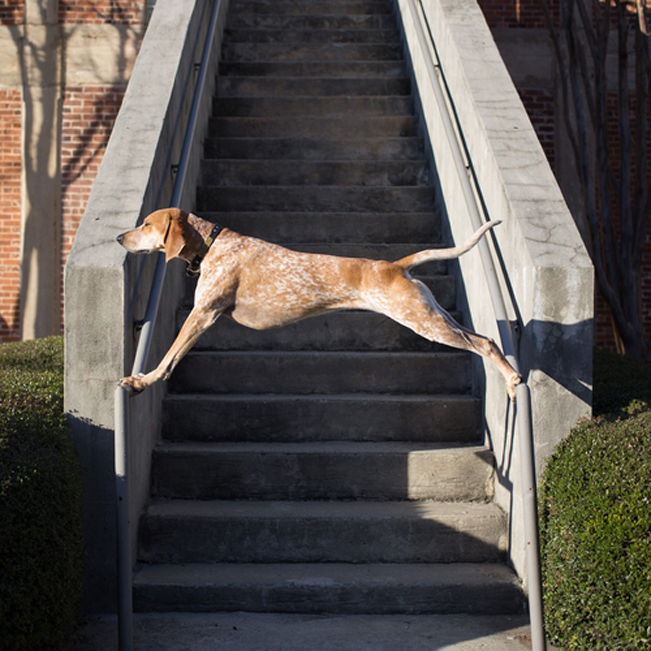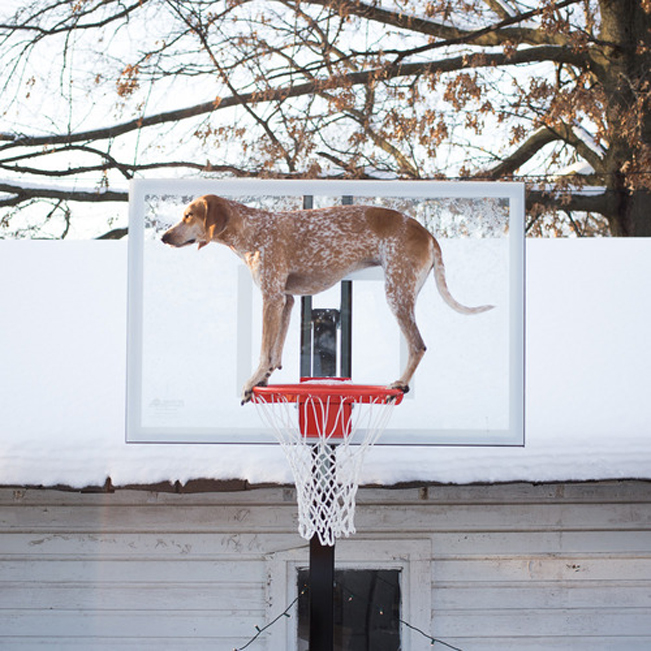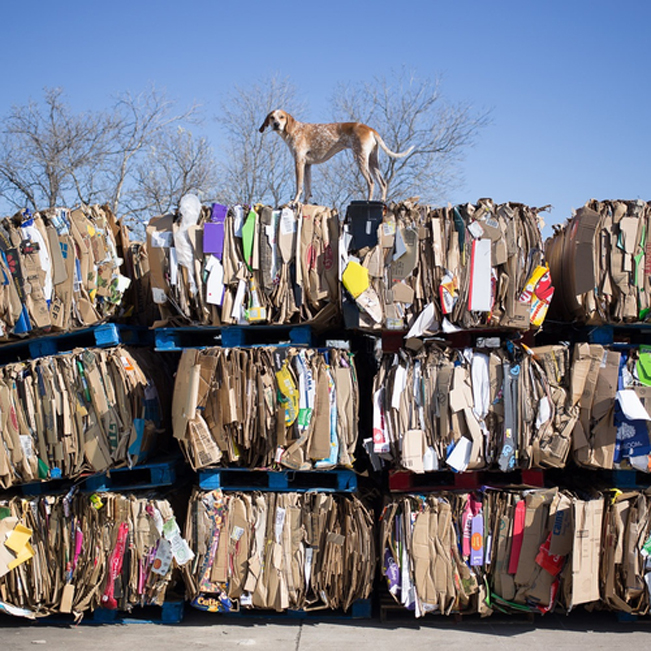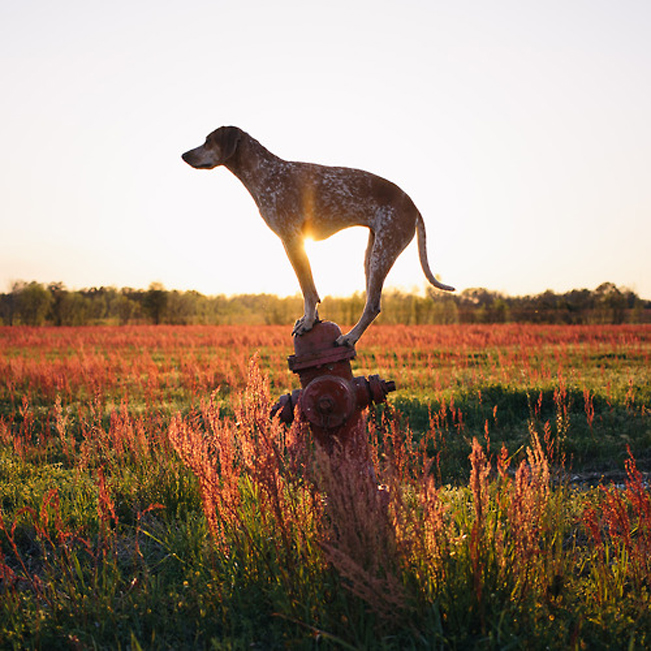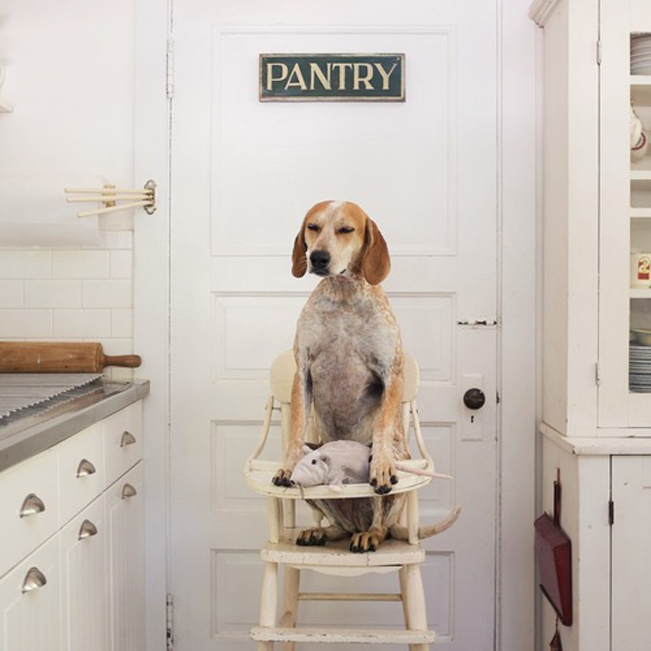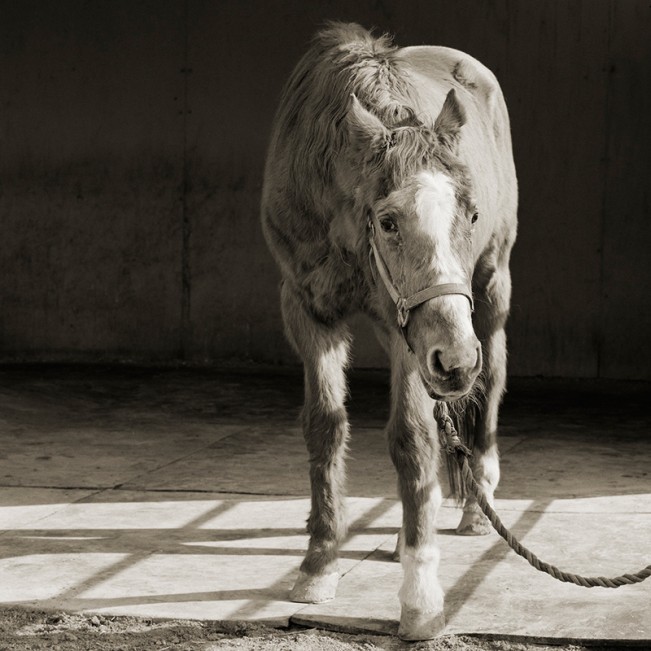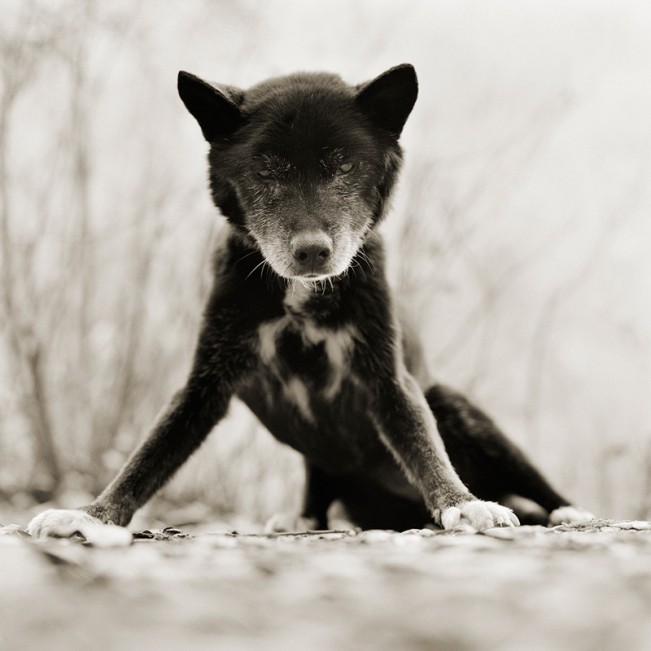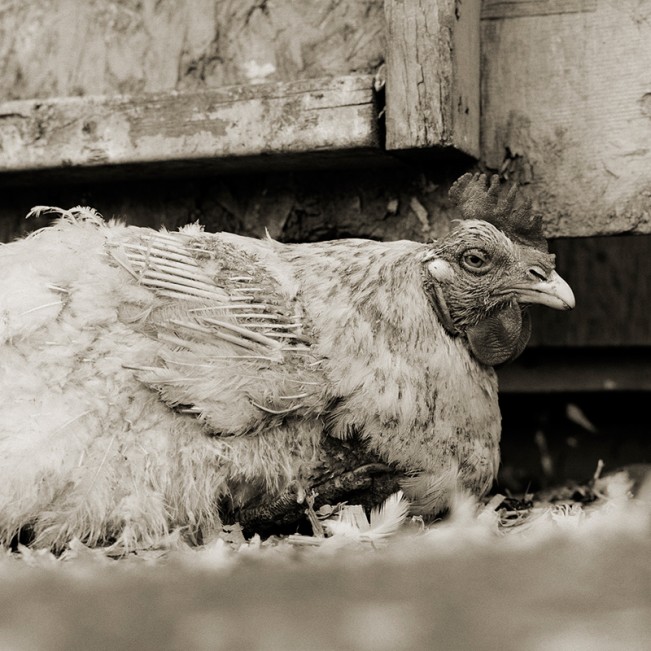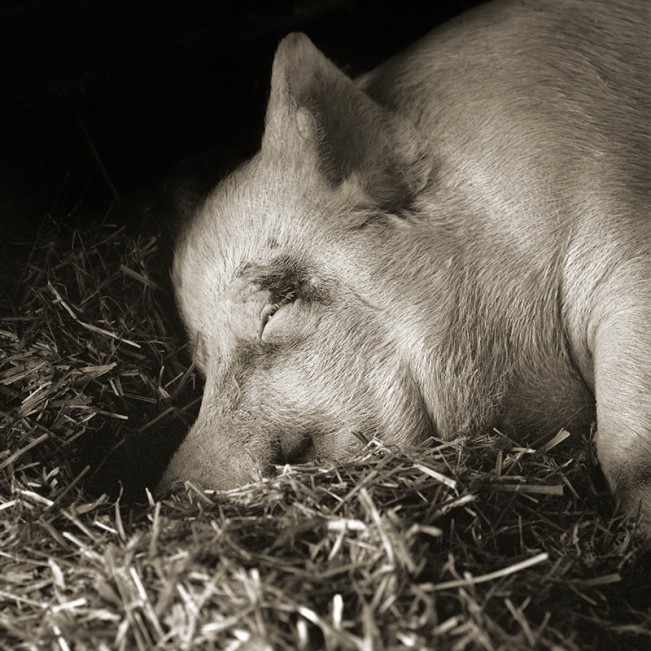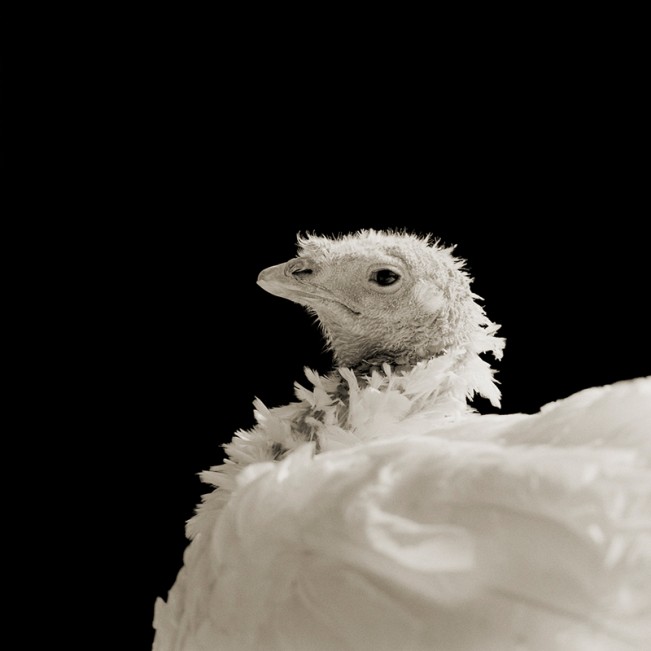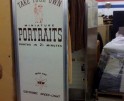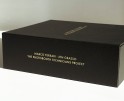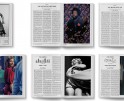Going, Going, Going Viral, Part 1
As someone who shares the work of a different photographer every day, I often make an effort to choose projects that might not have seen the light of day or haven’t had significant exposure. But sometimes by being on a site like Lenscratch or Wired.com or Huffington Post, that exposure launches the photographs out into the world in ways the photographers weren’t expecting. Once the media has a hold of imagery, often the photographer loses control over the work’s destiny, and sometimes they are not prepared to deal with a myriad of requests, how to monitize the experience, or navigate the viral waters. As many of the projects that I have launched on Lenscratch have gone onto dozens of other sites, I thought it would be interesting to ask photographers what that experience has been like, did it truly benefit their careers, and what were the long term effects?
When I think at the kind of work that goes viral, for the most part it falls into three categories: work about animals (oh those cat videos), work about aging / health / weight, and work that is visually arresting. I have asked a number of photographers to share their stories. A special thanks to Isa Leshko who put significant effort into the recounting of her experience, and for giving thoughtful suggestions on how to deal with the viral phenomenon. This is a two part post.
SHAKE went viral 3 years ago. My series on disabled pet, Invincible followed shortly after. Being that I have a book coming out, have done some great collaborations which my viral presence gave me the footing for, have some great sponsorships as well as a bit of a beginning break in to commercial work I can say that while it is certainly a whirlwind and confusing, it is not at all a hollow experience at all (at least in my case).
My book is my baby. I’m so proud of having the opportunity to make it, and I’m really hoping that the SHAKE collection continues to make people around the world forget their troubles for a second and feel good about dogs looking utterly ridiculous. It’s being published by HarperCollins, and I’m hoping that if it sells OK I’ll get another deal in the future. I have my book release at powerHouse books in Brooklyn in October, and an author talk at Powell’s in Portland in November already. I’m so excited about it.
Print sales? I’ve made at least 6k in profit the last year, and I haven’t been pushing my online store almost at all since I’m a pretty piss poor self promoter. Since the work went viral I’ve easily made over 10k — again not really promoting prints but just honoring requests.
After speaking with you I decided not to pursue galleries as when I first scratched the surface there was little interest in my work, and I realized that I wanted to make the prints available to people who might not be able to afford more high end gallery prices. I was a broke artist that donned coveralls to make money cleaning up animal shit for years — those are the people that I’m honored to have own my pieces. So I decided to make an open edition of ‘lower quality’ prints, in addition to my very meticulously printed limited (although not all that limited) editions, and sell them in an online store.
I don’t really expect anything for my work, I just enjoy making it. That said, the viral experience went OK for me because I didn’t expect the high to last, so everything I continue to receive from it feels like a gift. I make my work because I enjoy doing it, not to garner attention from the internet. I have a couple series I’ve held back because the viral waves can be a bit overwhelming and distracting. I’m a self critical, sometimes depressed creative… I’m going to go out on a limb and say many of us artists are, so I still have a hard time really believing that my work has gotten the reception that is has. I always appreciate this.
When I knew people were looking at my work, I pushed very hard to build relationships and find a way to establish something that would allow me to keep making art long term. My goal is to not have to go back to working a 9-5 in order to support my craft. So far this has worked, but only time will tell if I’m able to pull it off long term. I can say if SHAKE hadn’t gone viral I’d probably be scrounging for commissions right now to stay above water as a photographer, and commissions are honestly not my favorite thing to shoot. I very well might have gone back to animal care, and I would be OK with that if it happens in the future.
Going viral is an opportunity, what you do with the moment of attention is more valuable than how many people happen to visit your page or buy your prints. Write your favorite artist an email and see if they want to work on a project with you. Demand a silly amount of money from foreign magazines and when they shockingly agree to it, pay off your student loans, or buy a ticket to Italy and bum around drunk on excellent wine for a few weeks. Enjoy it, but don’t expect from it. Cry a little bit when the next artist takes your place, secretly resent if for a second, and then write them to offer advice — it feels really good to share the experience with someone and help them take advantage of it, because it is REALLY overwhelming.
But he also created a side project, Maddie On Things, that began to have its own following. Because he was so busy concentrating on the “real” project, Theron had little time to consider that his dog was creating an international fan club. From that viral exposure, Maddie has a book, Maddie the Coonhound, and Theron and Maddie have a national tour which you can follow on his wonderful Tumblr site, Maddie on Things.
I’m not sure I can speak about work going viral, is that what happened to mine? I guess I never thought of it like that or maybe just wasn’t worried about it? I was just shooting what I loved and was grateful that someone published it. For me my whole drive is story telling. Celebrating life. Remembering the small stories, the everyday stories, how the daily defines a life. Photos of my rad dog Maddie did get more attention, but to me it was just a side note to why I was creating work. It wasn’t driving me ya know? Don’t get me wrong, I love taking images of Maddie, but my heart is wrapped up in story telling. It has been interesting because the work I love isn’t inherently connected to the Maddie work, but it’s also not mutually exclusive. I suppose Maddie is my pop song, something fun and light hearted that hopefully brings more eyes to the work I love even more.
The Maddie work was made into a book and my documentary was named as a travel project of the year by Nat Geo, which opened up more rad doors: to go on a 50 state book tour and concurrently shoot a 50 state documentary and story telling project enabled/funded by Purina One. I’m totes grateful that I get to see all 50 states again, back to back! And shoot another documentary. Maybe it was a hot flash of Maddie work going viral? But we’re still out here shooting images we love. Theron Humphrey on Instagram
Isa is a fine art photographer living in Philadelphia, PA. She received her BA from Haverford College, where she studied cognitive psychology and neurobiology. Isa has had solo exhibitions at the Corden|Potts Gallery, the Galveston Arts Center, the Griffin Museum of Photography, the Houston Center for Photography, the Silver Eye Center for Photography, and the Richard Levy Gallery. Her prints are in numerous private and public collections including the Boston Public Library, Fidelity Investments, the Harry Ransom Center, Haverford College, and the Museum of Fine Arts, Houston. Her images have been published in print and/or online editions of The Atlantic, The Boston Globe, Frankfurter Allgemeine Sonntagszeitung, The Guardian, Harper’s Magazine, The New York Times, Photo District News and Süddeutsche Zeitung Magazin.
In 2012, Isa received both the Houston Center for Photography Fellowship and the Silver Eye Center for Photography Keystone Award for her Elderly Animals project. She was nominated for the 2011 Santa Fe Prize for Photography and was named a finalist for the 2011 New Orleans Photo Alliance Clarence John Laughlin Award.
Many of the animals who were photographed for this project were reared on factory farms before they were placed into sanctuaries. Others were beloved pets who were well cared for since an early age. Some the animals in these images appear to be quite frail; others seem youthful despite their advanced ages.
Defining the age at which an animal is considered elderly is not always clear-cut. Modern factory farm animals have been genetically engineered to mature faster and grow considerably larger than heirloom breeds. For example, chickens are slaughtered when they are around 42 days old so a rescued factory farm chicken is considered geriatric at only a year old even though heritage chickens can live up to 8 years old.
In order to achieve a sense of intimacy in these portraits, I spend several hours with the animals I photograph and I try to visit them multiple times. Depending on the animal, I may spend an hour or so simply lying on the ground next to the creature before I take a single image. This approach helps the animal acclimate to my presence and it allows me to observe the animal without being focused on picture taking.
I am creating these photographs in order to take an unflinching look at aging and mortality. My maternal grandmother had dementia during her later years, and now my mom has it. I am scared of developing Alzheimer’s disease and I get nervous whenever I lose my keys or forget a person’s name. Photographing geriatric animals enables me to immerse myself in my fear of growing old. I have come to realize that these images are self-portraits. Or at the very least, they are manifestations of my fears and hopes about what I will be like when I am old.
I also want my images to inspire greater empathy toward animals, particularly farm animals. It is very rare for a farm animal to actually live its full natural lifespan given that most of these animals experience brutality and death early in their lives. By depicting the beauty and dignity of these creatures in their later years, I want to encourage people to question and challenge the way farm animals are currently treated.
I am still traveling extensively to create new images for this project. I fund the project through sales of my fine art prints. Please contact one of my galleries for additional information on purchasing my work.
Her story follows:
I never imagined that my work would go viral and was completely unprepared for it emotionally. At times it was an exhilerating experience. Other times, plain surreal, like when Alyssa Milano tweeted a link to my work. But it was also very hard to see such personal work being distributed so widely in such casual ways. Images that took months to produce were being devoured and then distributed in a matter of seconds. I felt incredibly vulnerable and exposed.
Keep in mind that this project initially started out as a theraputic means of working through my grief and fear surrounding my mom’s decline due to Alzheimer’s disease. Initially I had not planned to show this work to anyone beyond close friends and family. I never ever envisioned that this work would achieve this level of visibility. The early days of my work going viral were also terrifying because I quickly realized that I had very little control over how and where my images were being used.
Most bloggers have not asked permission prior to using my images on their sites, which really bothered me at first. I have definitely cringed at the way my images have been used online. I’ve seen them appear on porn sites. I’ve seen some bloggers put cartoon hearts around my images. I kid you not. At first I tried to shut down unauthorized uses of my work, but that quickly proved to be an impossible task.
I generally have accepted these unauthorized usages of my images as the cost of putting work up on the Internet. And, I do appreciate that these bloggers have connected me with new and unexpected audiences. Fortunately, print publications and larger blogs do ask permission prior to using images. That enabled me to control how and where my images would appear in the mainstream media.
I feared that curators and collectors might lose respect for my work after it went viral. I very emphatically positioned this work as a fine art project dealing with aging, grief, and animal rights. If I sensed that a reporter or editor wanted to write a fluff piece as a vehicle for cuteness porn, I declined an interview. The first few times I turned down coverage of my work was scary. But it was empowering. I also received several requests to license my images on cards and merchandise which I flatly turned down. I feel a deep obligation to the animals I photographed and to their caregivers to ensure that this work is handled in a respectful manner.
Unlike the first viral wave, this time I was prepared. I had cleared my schedule for the first few weeks after releasing the film so I could respond to media requests and also be in a position to pitch the film to editors and reporters whose work I respected. I felt so much more in control of the process this time which was cathartic after feeling so bewildered during the first viral wave. NPR was the first web site to run the film. The Atlantic web site and iPad app was next to feature it. From there, the film started going viral. The NY Times then featured it on one of their blogs. The article ended up in the top 10 most e-mailed stories from the Times’ web site for 2 days. The response to the Times article was incredible. My mailbox was flooded for months and my galleries were also swamped with print inquiries. The response was beyond my wildest dreams. Shortly after the NY Times piece ran, Frankfurter Allgemeine Zeitung contacted me about illustrating a feature on aging in animals that would run in their Sunday edition. Four of my images were published on the front page and they ran 10 images over a 2-page spread. One of my images was also used as the cover image of the iPad edition.
From there, my work received coverage in other major publications and web sites including, Harper’s Magazine, The Houston Chronicle, AARP Bulletin, The Dish, MSNBC.com, Mother Jones (web site), Roger Ebert’s Journal, and Oprah.com.
1. Register your images with the Copyright Office before posting them on your web site.
Registering your images should be a regular part of your workflow before you distribute any new images to the public. As my work went viral, I took some comfort in knowing that my images were registered and that I would have an easier time legally pursuing damages if my work was infringed. ASMP is a wonderful source of information on how and why you should register your images.
2. Carefully plan the timing of a PR campaign if possible
When planning a PR campaign, carefully consider the timing. I could have released my film in September when it was ready. It may have still received coverage and generated print sales. But, I decided to release the film in early November instead as a means of attracting holiday print sales. And, my galleries and I scheduled a price increase in mid-January as further incentive for buyers. The timing worked very well. Also keep your shooting schedule relatively clear during weeks in which you are focused on PR. The last thing you want is to get a media inquiry from a major publication and not have time to respond to it. Always respond to a media inquiry very promptly – preferably within an hour of receipt. The reporter contacting you might be working on a tight deadline, and a slow response might result in a missed opportunity.
3. Remember your goals and message
When you get a media inquiry, always keep in mind your goals for your work and how this media coverage would help you attain them. I do not believe that any PR is good PR when it comes to articles about your work. If you are primarily a fine art photographer, you probably don’t want your work featured in a tabloid magazine or entertainment news show. When giving an interview, keep your focus on the core ideas you want to convey about your project. If the reporter or editor does not want to have a meaningful discussion about your work, turn down the coverage. Trust your gut on these matters and/or bounce the situation off a trusted friend or advisor. Protecting how your work is perceived is far more important than any short-term publicity you might gain from a fluff piece about the work. Patti Smith recently gave very good advice to young artists during a talk at the Louisana Museum of Modern Art: “Build a good name. Keep your name clean. Don’t make compromises, don’t worry about making a bunch of money or being successful—be concerned with doing good work and make the right choices and protect your work. And if you build a good name, eventually, that name will be its own currency.” Keep these thoughts in mind if you ever find your own work going viral.
4. Learn how to price your work for licensing
When my work first went viral, I was completely inexperienced with licensing images. When I received my first print use request, I reached out to friends who are editorial photographers for advice. I recommend you do the same before licensing your images if you are not versed in the process. I also highly recommend buying a copy of FotoQuote. Over the last two years, I have earned a nice income from licensing fees, primarily for print usage. A few online venues have paid usage fees as well, though that is less common. FotoQuote has been an indespensable resource for me.
5. Protect your work through license agreements
Instead of assuming you and an editor are on the same page, ask detailed questions and clearly define the usage terms with which you are comfortable. Editors frequently can provide you with a mockup for the pages in which your images will be used. It never hurts to ask for one. I always use a license agreement whenever my images are published electronically or in print by a third party. Even when an editor does not pay for using my images, I request that a license agreement is in place. Retaining creative control of my images is very important to me, so I always request that an editor may not crop my images, print words over them or otherwise alter them without my prior approval. I also clearly stipulate that usage of my images beyond the terms outlined in the agreement is neither implied or granted without prior written permission from me. To learn more about licensing, visit the ASMP tutorial.
6. Keep tabs on online usage of your work
Shortly after my work went viral, I set up Google alerts and Twitter searches on various key words relating to my work. These alerts enable me to monitor how my images are being used in the blogosphere. If I find any instances that are offensive or blatantly disrespectful to the work, I send the blog author and/or site administrator a DMCA Take Down Notice. I also have reported numerous copyright violations to Facebook administrators. In each instance, the offending content was removed within 24 hours. Unfortunately, Facebook does nothing to shut down pages maintained by repeat copyright offenders. I had to report one page several times. But, the content is removed quickly once the violation comes to their attention.
Here are some very good tutorials on DMCA Take Down Notices:
Petapixel, DP Review, and Rising Blackstar.
7. Don’t lose sight of what is most important.
I remember having the worst performance anxiety leading up to my first Elderly Animals shoot after my work went viral. I nearly had to cancel the shoot because I was so nauseous. Expectations for this work had become so high and I feared that I might not be able to deliver upon them. Fortunately, once I began the shoot, I got so absorbed in my work that all of my anxiety dissipated. The experience reminded me that it is so important to not think about how your work will be received while you are making it. Doing so is aking to looking down while walking on a tightrope. It’s critical to focus only on the work itself and not worry about what anyone else thinks of it.
I have received hundreds of deeply personal emails from people around the world, sharing with me their grief over a dying parent or an ailing beloved pet. At events relating to this work, total strangers routinely hug me while tearfully sharing their story of loss. I am often baffled by these experiences and have found myself feeling guilty for making people feel sad. I am deeply touched that my work has affected people on such an emotional level. I am so grateful for the outpouring of love and support that I have received for this work. But these encounters can often be painful as well. My mother passed away in June after a long illness and my father is in very poor health. My own grief is still very raw and I sometimes have a hard time reading or even responding to the letters I have received. I am still figuring out how to best handle how to respond to these letters in a caring way while also protecting my own emotional well-being.
Part Two of, “Going, Going, Going Viral,” continues tomorrow.
Posts on Lenscratch may not be reproduced without the permission of the Lenscratch staff and the photographer.
Recommended
-
Spotlight on the Photographic Arts Council Los AngelesNovember 23rd, 2025
-
100 Years of the Photobooth: Celebrating Vintage Analog PhotoboothsNovember 12th, 2025
-
100 Years of the Photobooth: The Photobooth Technicians ProjectNovember 11th, 2025
-
100 Years of the Photobooth: Rafael Hortala-Vallve: AUTOFOTONovember 10th, 2025
-
BEYOND THE PHOTOGRAPH: Q&A WITH PHOTO EDITOR JESSIE WENDER, THE NEW YORK TIMESAugust 22nd, 2025


